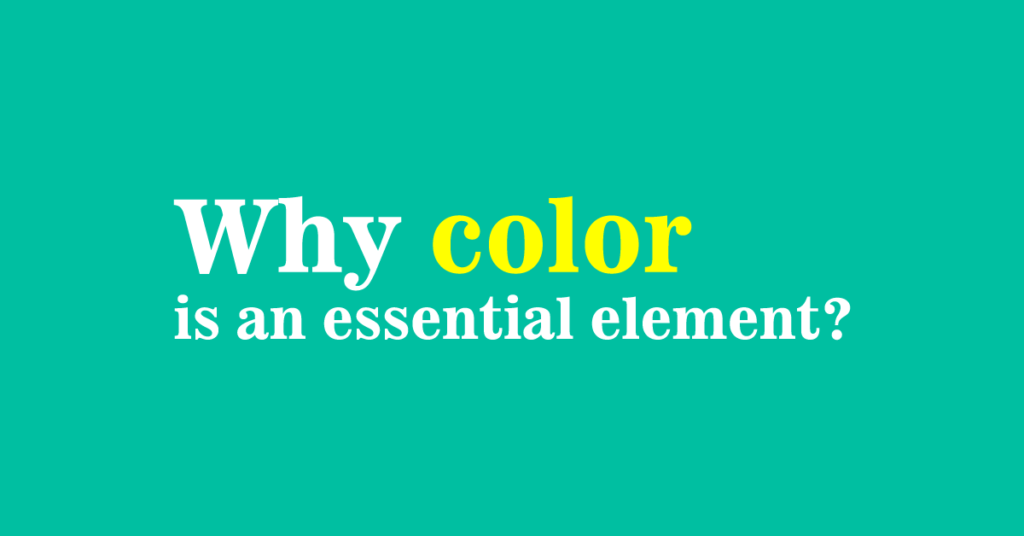Graphic design is a form of visual communication where messages are conveyed through images, symbols, colors and Color is very necessary for designer because without color it is not possible to fully express any designs. Color conveys different moments of the same design. we will explain why color is so influential in graphics design and how it works in many different ways.
Psychological Effects of Color
Color is capable of evoking mental and emotional responses. Each color has its own psychological effects that influence people’s feelings and decisions for Graphic design. For example:
Red: color can evoke excitement, energy and immediate response. It is often used for danger, love or emergency.
Blue: color conveys peace, trust and professionalism. This color is common in banking or corporate branding.
Green: color symbolizes naturalness, health and prosperity. It is often used in environmental awareness campaigns.
Yellow: acts as the color of happiness and enthusiasm, which can liven up any advertising or promotional work.
These psychological effects play an important role in branding and advertising. Graphics designers with such knowledge can effectively display the mindset and message of a product or service by selecting the right colors.
Creating visual hierarchy and focus
Color is used to create visual hierarchy in Graphic design. Through this, it is possible to indicate which part of the design the viewer’s eye will read first. For example:
– Brightly colored elements are more attractive and help to hold the attention of the viewer.
– A light or muted color background makes the main content stand out clearly.
– Using contrast or opposite colors together draws the viewer’s eye, such as black- red -green.
Thus, through proper use of colors, graphics design becomes easy on the eyes of the viewer and conveys the message well.
message well.
The role of color in building brand identity
A brand is associated with certain colors that become a part of its identity. For example, red – Coca-Cola, black and white with Nike, or green with Starbucks etc. These colors give brands a distinct identity and build their brand memory.
This use of color is most important in graphics design. Choosing the right color for a brand sends the right message to its target audience & establishes brand identity.
Cultural Differences and Color Meanings
Colors have different cultural meanings around the world. For example:
white color is a symbol of purity and innocence in Western culture, but in East Asia it can symbolize mourning and Red colors symbolizes good luck and happiness in China, but in some other cultures it symbolizes danger or anger.
Designers have to choose the right colors keeping such cultural differences in mind. Understanding the meaning of color and applying it is especially important when designing for a global or multicultural audience.
Connecting with Nature
A special feature of color is that it can connect the human brain with natural elements. For example, when we see the color green we think of plants or nature, the color blue brings us images of the sky or the sea. This connection to nature makes graphics design alive and believable. Designers often use a mixture of natural colors to add nature’s naturalness to products or promotions.
Emotional Color Theory and Design
Color theory plays an important role in graphics design. This theory suggests how to emotions using different shades-tones and hues of colors. Warm colors such as red, yellow, and orange convey enthusiasm & excitement, while cool colors such as blue and green convey and relaxation.
These properties of color are able to create specific moods through a graphics design and help connect the viewer emotionally. This is why the use of color in advertising, poster, website or mobile app design is very important.
Effects on Consumer Purchase Decisions
Most of the studies have shown that color directly influences consumer purchasing decisions. The use of right colors in a product’s or advertisement can attract the customer’s attention and induce him to purchase. example: the use of red and yellow colors in fast food restaurants whets the appetite of customers and prompts them to make quick decisions.
Graphics designers know these make a proper color scheme, which not only helps in beautifying the product but also in changing the buying habits of the customers.
Contrast and Readability
Color ensures not only visibility in graphics design, but also readability. When creating contrast with a background, text and images are easily visible. A clear and high contrast color scheme makes the design effective and professional.
For example, white text on a black background is highly readable, which is seen on many websites and posters. Without proper contrast, designs can look messy and blurry.
Use of digital media and color
Graphics design such as websites, print media and various digital media, with RGB and CMYK colors now widely color is especially important for digital media, as the perception of color on different platform are (Red, Green, Blue) and CMYK (Cyan, Magenta, Yellow, Black) colors models. Read more
Conclusion
The importance of color in graphic design is undisputed It creates not only visual effects, but also psychological, emotional and cultural responses. Choosing the right color is important for designers because it helps to create a connection with the brand, influence customer decisions a design message.
